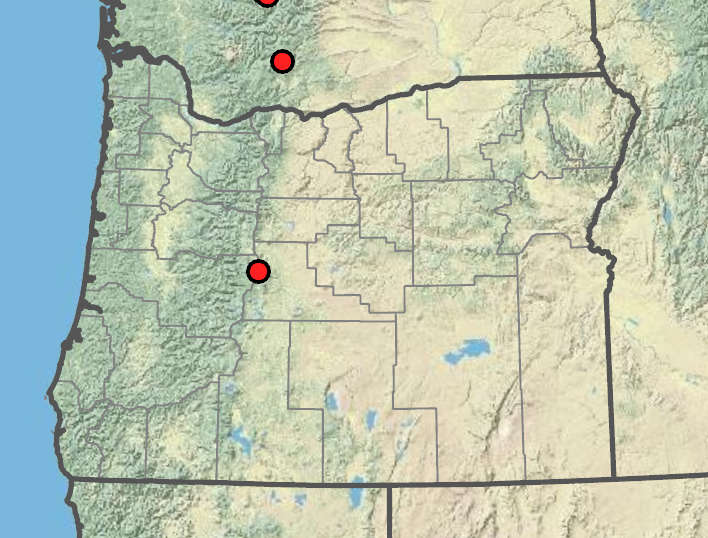Poa lettermanii
Poa piperi
Letterman's bluegrass
Piper's bluegrass
nodes terete, 0–1 exserted.
intra- and extravaginal or mainly intravaginal.
extra- and intravaginal.
sheaths closed to 25% of their length;
ligules 1–3 mm;
blades flat or folded, or slightly inrolled, 0.5–2 mm wide.
sheaths closed 33–50% of their length, bases of basal sheaths glabrous, collars of at least some leaves usually sparsely short-hairy;
ligules 1–2 mm, blades of tillers to 40 cm long;
upper surface moderately to densely scabrous or minutely hairy on and between the veins;
cauline blades involute, 1–3 mm wide;
lower surfaces smooth;
upper surfaces sometimes sparsely hairy;
blades much reduced higher on the culm; uppermost blades 1–4.5 cm.
erect, contracted, 1–3 cm long, usually exserted from the sheaths;
branches erect to steeply ascending; slender; to 1.5 cm.
erect to nodding, lanceoloid to ovoid, loosely contracted; sparse, 4–8 cm;
spikelets 18–60;
branches ascending; lax, 3–8 cm long, 1–2 per node, with 3–8 spikelets.
3–4 mm, green or purple;
florets 2–3;
rachilla internodes less than 1 mm long; smooth.
6–9(11)mm; to 3 times as long as wide;
florets 2–5(7);
rachilla internodes 1–2 mm long.
lanceolate to broadly lanceolate, 2.4– 3.6(4) mm, usually equaling or exceeding the lowest lemma, frequently exceeding the upper florets;
lower glumes 3-veined.
subequal;
lower glumes 3-veined.
glabrous.
with diffuse; soft cobwebby hairs about 50% as long as the lemma.
lanceolate, 2.5–3 mm long, distinctly keeled; thin, glabrous;
keels and marginal veins rarely sparsely puberulent;
tips acute.
lanceolate, 4–6(7)mm, distinctly keeled, glabrous throughout; smooth or sparsely to moderately finely scabrous;
keels scabrous;
tips acute.
0.2–0.8 mm.
vestigial and 0.1–0.2 mm, or 2–3 mm.
=14.
=28.
Poa lettermanii
Poa piperi
Rocky alpine ridges and ledges. 2900–3100m. Casc. CA, ID, NV, WA; north to British Columbia, east to CO. Native.
This is a small, cespitose, alpine bluegrass, most similar to P. suksdorfii. Both have subequal glumes that tend to be longer than the lowest lemma, but P. suksdorfii has larger spikelets with longer glumes. In Oregon, P. lettermanii is known only from high elevation on South Sister in the central Cascades.
Forest openings on serpentine soils. 300–1600m. CR, Sisk. CA. Native.
Poa piperi is a dioecious, usually glaucous grass with nearly transparent glumes and cobwebby callus hairs.
Rob Soreng, Barbara Wilson, Richard Brainerd, Nick Otting
Rob Soreng, Barbara Wilson, Richard Brainerd, Nick Otting
- Local floras:
BC,
CA,
OR,
WA
- Local Web sites:
CalFlora,
CalPhotos,
Flora NW,
PNW Herbaria
WildflowerSearch
iNaturalist (observations)
USDA Plants Database
- LBJ Wildflower Center
- SEINet
- Plants of the World Online
- Encyclopedia of Life
- Wikipedia
- Google Image Search




